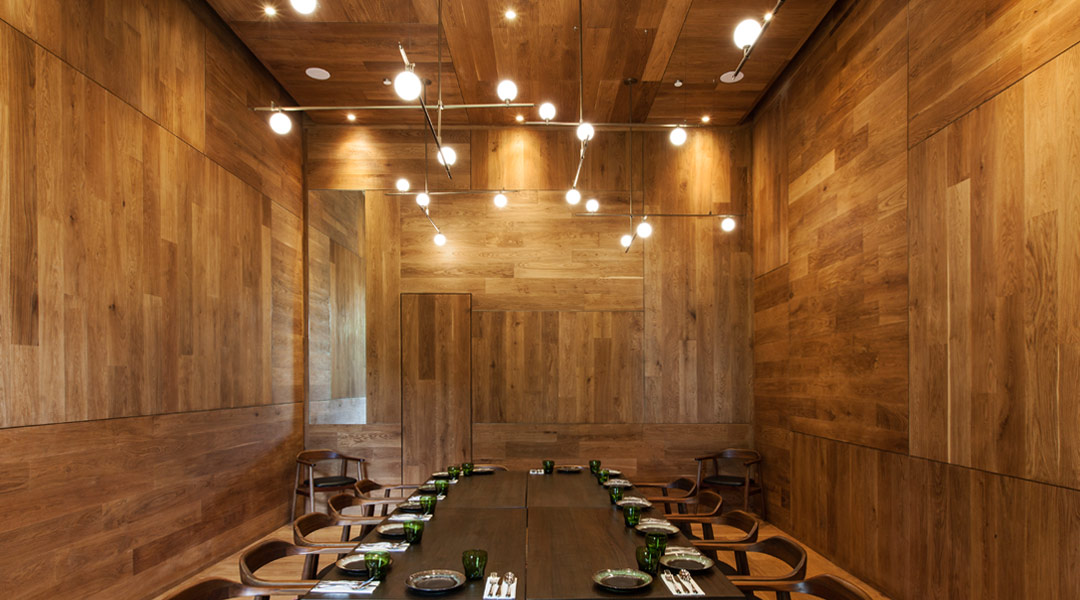
The Pig and Palm: Neri&Hu’s temple for tapas in Cebu
Like bright binary stars, the three power couples traveled each in their own orbit—Lyndon Neri and Rossana Hu (principals of Neri&Hu) in architecture and design, Jason and Ihra Atherton in cuisine, and Chris and Carla McKowan in real estate. The three might never have crossed paths were it not for ties to Cebu that drew them all at the right time to the Queen City of the South.
The auspicious confluence began three years ago. The UK-based Athertons were in Cebu, Ihra’s hometown, looking to buy a house for her mother. They were eyeing one of the properties developed by MSY Holdings, owned by Carla’s family, where she is director, and husband Chris McKowan, chief of operations. The two couples met and hit it off to create Cebu’s hippest tapas bar, The Pig and Palm.

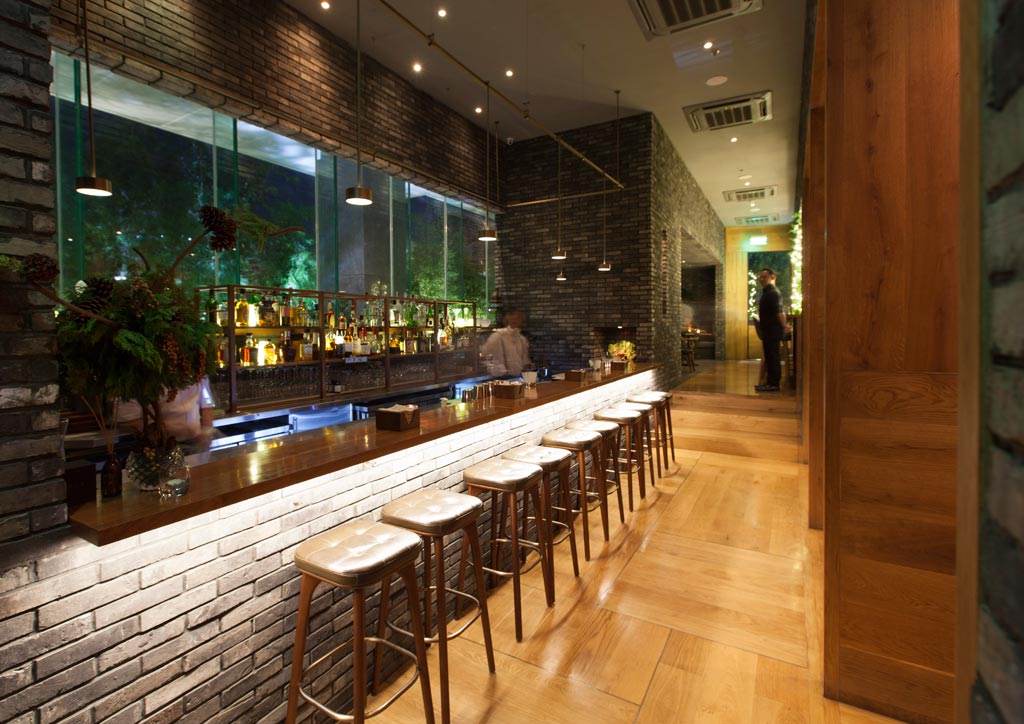
“Apart from both husbands being Brit and the wives being Cebuana, I really liked that they were taking care of Ihra’s mom. I felt we shared the same values,” says Carla. Chris adds: “We love good food and eating out. We knew Jason was a chef, but we were blown away when we discovered he was Michelin-starred, with over a dozen restaurants in London, Hong Kong, Dubai, Shanghai, and Sydney.”
The friendship led to earnest discussions between the two couples of putting up a restaurant in Cebu, and that’s when the Athertons pulled in Shanghai-based architect Neri and his designer wife, Hu, who had already designed several of their restaurants. Neri said yes at once, delighted his first project in the Philippines would be in his old hometown: “It was good to be able to give back something—albeit small—to a city that has given me so much.”
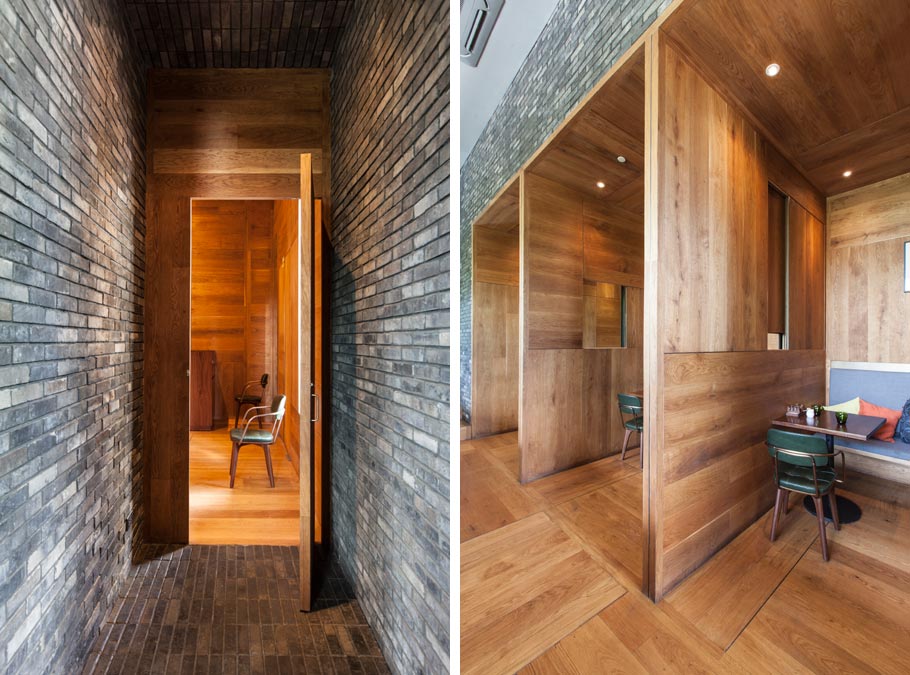
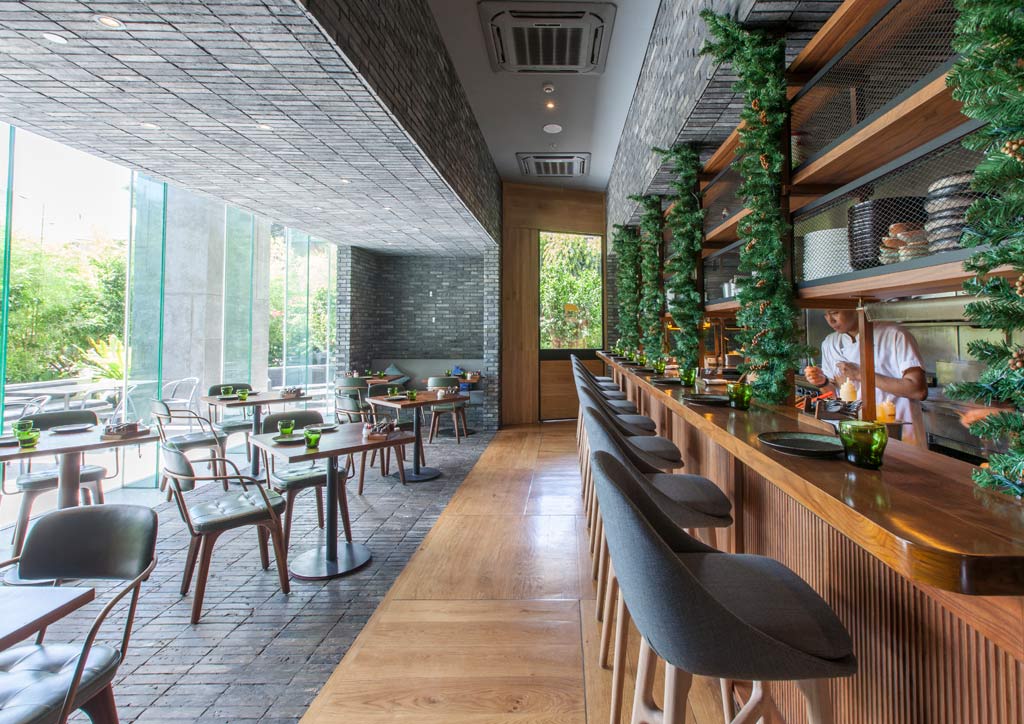
The Pig and Palm (a reference to British pub nomenclature) would occupy 250 square meters on the ground floor of the Yeung family’s MSY Tower in Cebu Business Park. Says Neri: “We had a brief from Jason Atherton in terms of how the restaurant program should be, but being raised in the Philippines I had always been interested in the historical context of Cebu and its relationship with forts. The heaviness, the harnessing of light, and the capturing of spatial moments are a testament to this typology.”
Neri&Hu presented two schemes, one primarily of wood inspired by the bahay kubo and the other predominantly reclaimed brick, inspired by Fort San Pedro and Cebu’s Spanish colonial churches. “The wooden one was the safe bet and we were leaning towards it,” says Carla. “But Neri and his office all loved the more avant garde one, which was the brick. In the end, the decision was to go with the one Neri&Hu loved because we wanted to produce something the designers really felt was theirs.” For his part, Neri explains: “The second one offered spatial qualities that were more intense and refreshing.”
READ MORE: Dominic Galicia on Designing the Ineffable
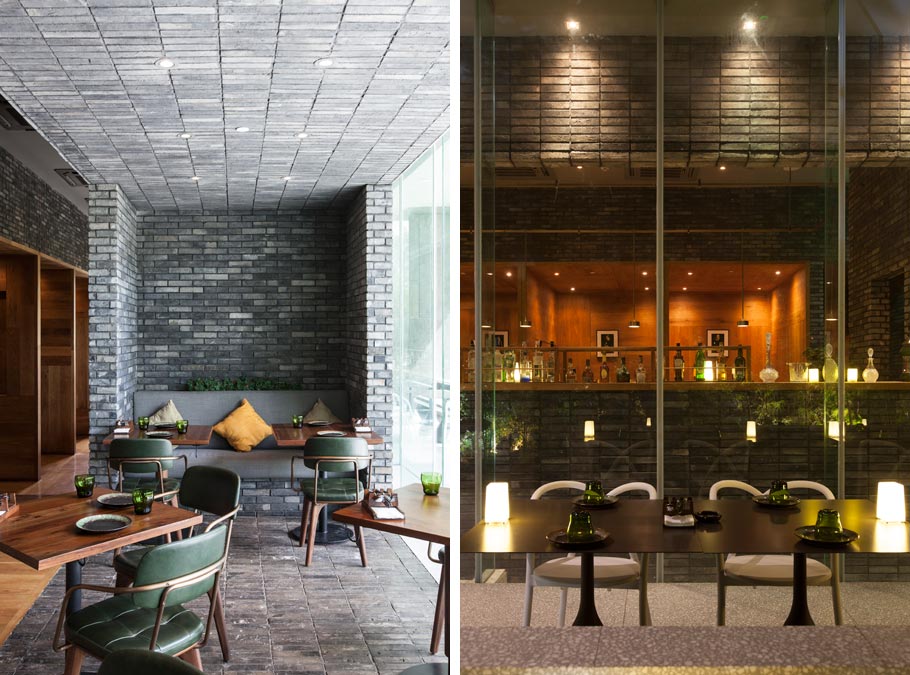
The design concept, as described by Neri&Hu Design and Research Office, is a joy to read and demonstrates the firm’s thoughtfulness, astute creativity and marketing savvy:
“The restaurant is intentionally distinct from its immediate context. Transforming the glass and steel of a modern commercial building into a brick fortification, it brings a sense of history that transports guests immediately to another time and place. Its main façade is composed primarily of gray brick in various bond patterns, with a single aperture for a glimpse inside and a discrete entry framed in wood. Upon entering, the brick material continues, drawing the exterior deep into the cavernous spaces of the interior.
“Resonating with the devout lifestyle of Cebu’s heavily Roman Catholic population, the design also evokes the visceral potency of spaces of worship. Wood elements inserted throughout the spaces recall the altar and pews found in traditional churches. Individual lounge alcoves are also clad with wood panels in a clever reinterpretation of the confession booth—so that guests can ‘repent’ whilst indulging in and imbibing earthly delights.
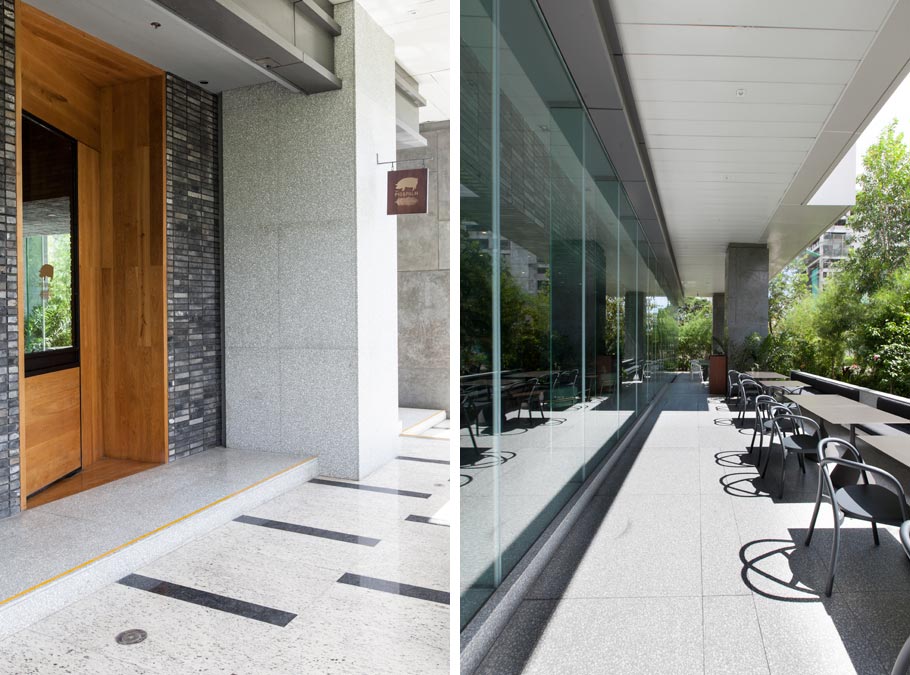
“Contrasting with the heaviness of the architectural insertion, intricately detailed furniture and lighting add a layer of opulence that elevates the dining experience to harmonize with the chef’s innovative haute cuisine. The timber structure of the tapas bar, with its expressed joinery and paneling, evokes the crafted carpentry of traditional furniture making.”
“Also expressing a clear tectonic hierarchy, the custom-designed furniture pieces are composed of a brushed brass structure that cradles the wood and leather seat insertion. The custom pendant fixtures also share the same design language of metal structures and add-on accessories to cater to various functions.
“With an all-encompassing design strategy, Neri&Hu’s fortified settlement not only serves as a bastion of local heritage, but also a gateway to new encounters. Both the cuisine and the space aspire to strike a balance between old and new, rustic comforts and refined luxury, crafted precision and raw emotion.”
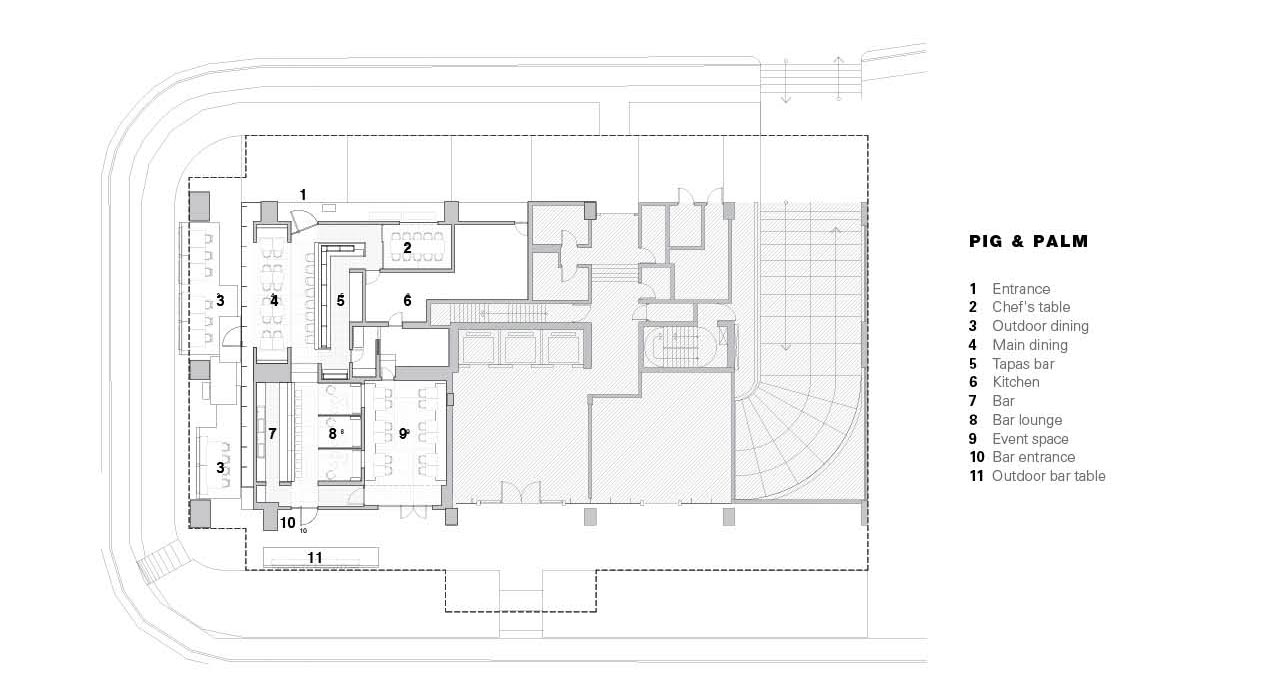
Whether or not patrons of The Pig and Palm can divine the sources and exegesis of Neri&Hu’s inspiration, they adore the interiors and worship the tapas-style dishes Atherton is renowned for. Says Carla: “They say they feel like they’ve been teleported to another place, and yet it still feels familiar.”
Chris adds: “Part of Neri&Hu’s and our agenda was to help push design and dining forward here in Cebu, with a restaurant that makes you step outside your normal experience. Surely that’s what you want when you go to a nice restaurant.” Amen, say Atherton’s and Neri&Hu’s devout followers. ![]()


